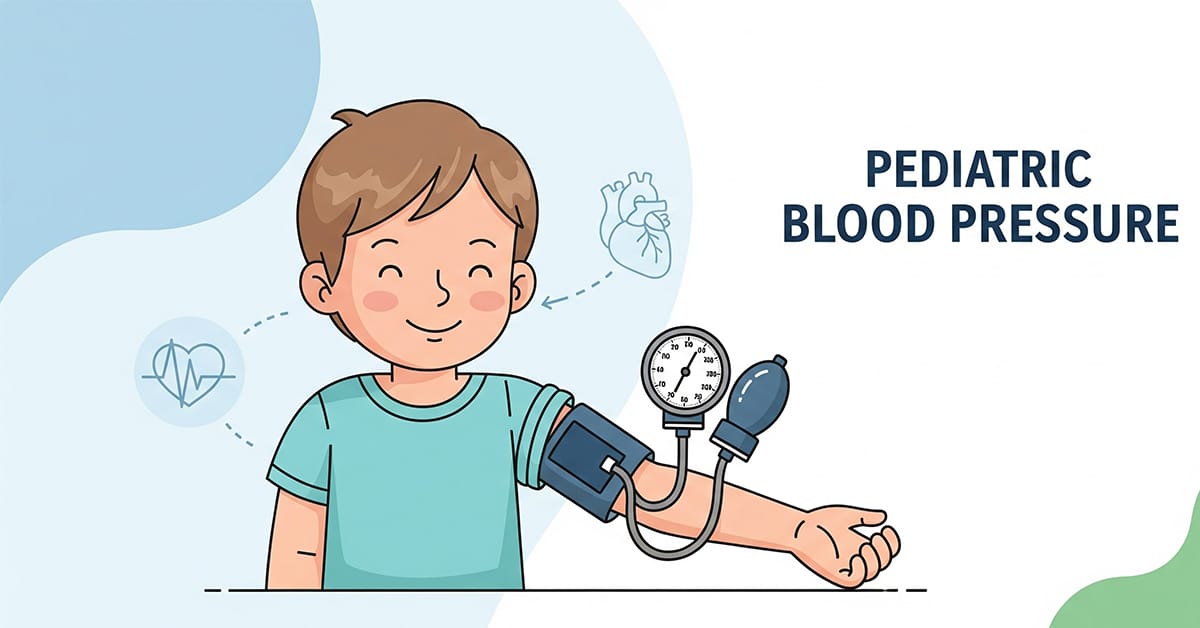Understanding Your Child’s Blood Pressure
An interactive guide for parents and caregivers to understand, measure, and monitor pediatric blood pressure.
Pediatric Blood Pressure Calculator
Enter your child’s details to classify their blood pressure reading based on 2017 AAP Guidelines.
Why Monitoring Matters
The rate of high blood pressure in children is rising, linked to obesity and inactivity. Early detection is key because childhood hypertension is a strong predictor of adult hypertension and can be a sign of other underlying health issues.
~6%
of children and adolescents have elevated blood pressure or hypertension.
Long-Term Consequences
Untreated high blood pressure in youth can lead to early damage to vital organs.
- ❤️ Increased strain on the heart (Higher Left Ventricular Mass).
- 🧠 Stiffer arteries, a risk factor for future cardiovascular events.
- երի Early signs of kidney damage and reduced function.
How to Measure Accurately
1. Preparation
Child should rest quietly for 3-5 minutes. Ensure they are calm and seated with their back supported, legs uncrossed, and feet flat on the floor.
2. Cuff Size is Critical
Use a cuff with a bladder that wraps 80-100% around the arm and has a width of 40% of the arm circumference. An incorrect size will give a false reading.
3. Take Multiple Readings
Measure three times, with a few minutes in between each reading. Use the average of the last two readings for the most reliable number.
Impact of Incorrect Cuff Size
This chart illustrates how an improperly sized cuff can dramatically alter a blood pressure reading.
Understanding the Categories
Blood pressure in children is classified into four main categories. The interactive calculator above will determine the correct category for your child.
Normal
Below the 90th percentile.
Elevated
90th to <95th percentile.
Stage 1 Hypertension
≥95th percentile.
Stage 2 Hypertension
Well above the 95th percentile.
Visualizing Your Child’s Reading
After using the calculator, this chart will show your child’s reading compared to the guideline thresholds for their age, sex, and height.
Age Makes a Difference
The method for classifying blood pressure changes at age 13.
Ages 1 to <13 Years
Classification is based on percentiles, comparing a child’s reading to others of the same age, sex, and height.
Ages 13+ Years
Classification uses fixed numbers, similar to adult guidelines (e.g., <120/80 mmHg is Normal).
Associated Risk Factors
Several factors can increase a child’s risk of developing high blood pressure. Obesity is the most common contributor.

